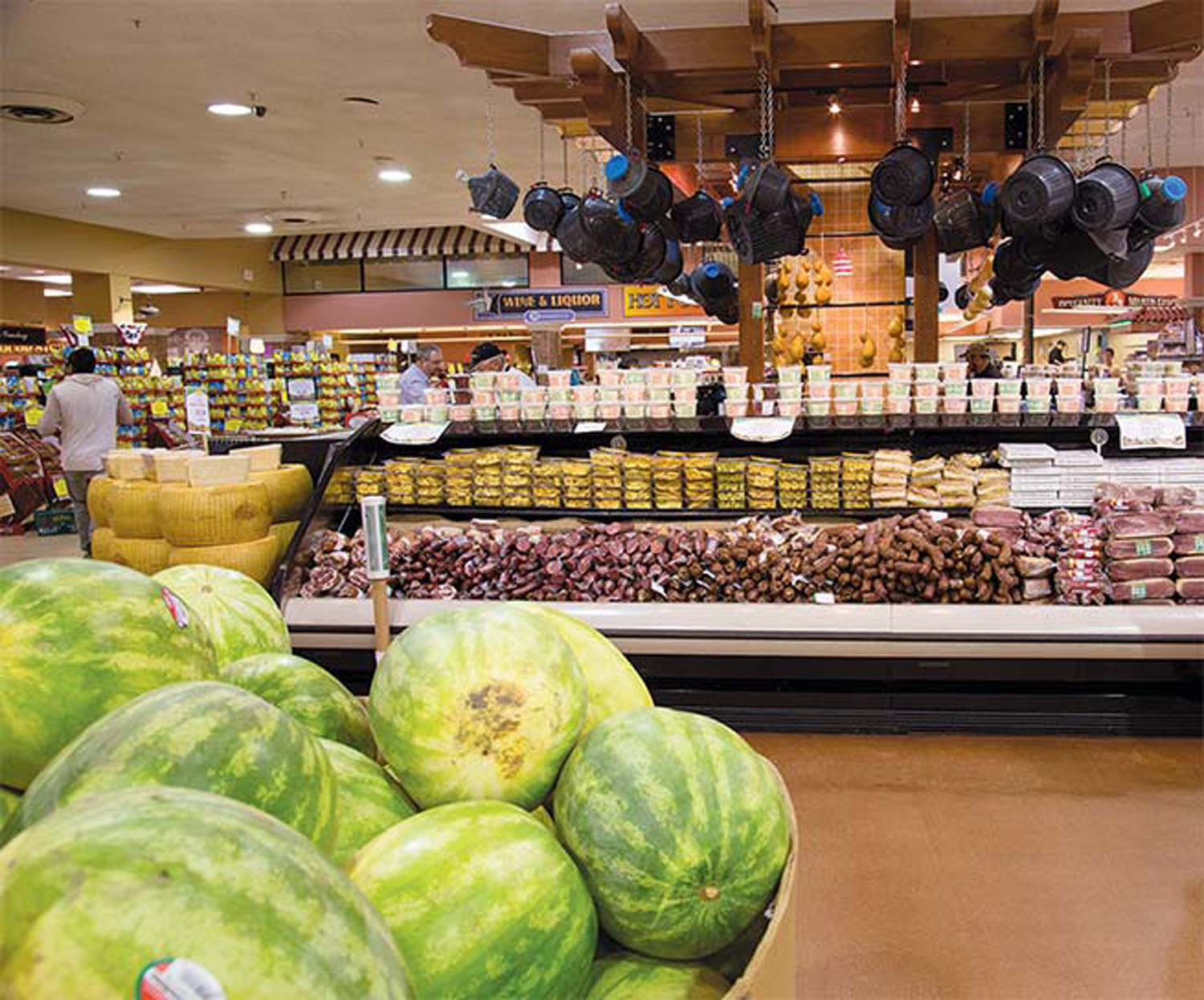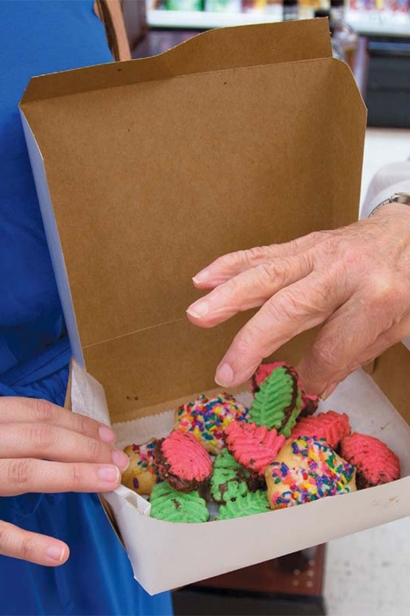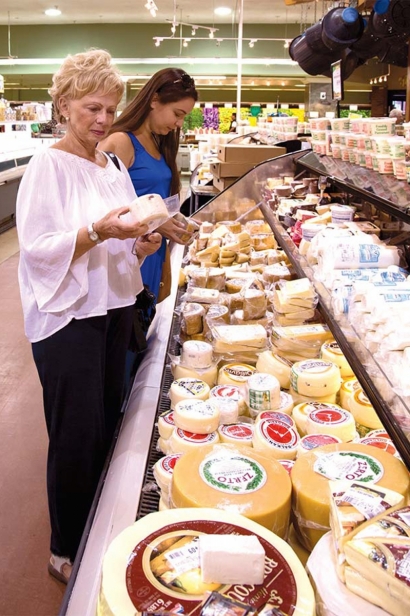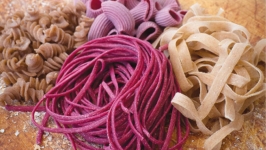Corrado's Market: A Market for Memories
Growing up, there were four words guaranteed to ruin my Saturday: Let’s go to Corrado’s.
Grocery stores don’t typically dominate people’s early memories, but when I think of my childhood, Corrado’s in Clifton springs to mind. My mother grew up nearby in what is now Elmwood Park, in an Italian-American family where food was a direct expression of love and finding a deal was as good as winning the lottery. She had already been going to Corrado’s for decades by then and couldn’t understand my aversion to it.
It wasn’t just the grocery store that I disliked. It was the sheer amount of time we spent there. Food, specifically Italian food, is my mother’s lifelong passion; we would disappear into a universe devoid of space and time as soon as we crossed the threshold of those automatic doors.
As a mildly dramatic preteen, I envisioned the time as ripped pages of my life floating into the sky, never to be seen again. We spent so long in Corrado’s each time we visited that I was sure I would die in there one day—which was convenient, because the garden shop next door sold elaborate ornamental statues so large they could double as headstones.
The old-school grocery store was an assault on my young, small-world senses. I hated its buzzing yellow lights, its strong spices and its dull beige flooring. I hated the neighborhood, I hated the noise, I hated the old Italian widows dressed in black who poked at me like I was a tomato. I hated the oversized marbled meats hanging from the ceiling.
But for my mother, this was Disneyland. She weaved up and down the aisles like a pinball, grabbing packages and telling me intricate stories that related each ingredient to some aspect of her childhood, like the relative whose house always smelled like lemons or the cousins she would hide under the bed with as they secretly devoured the last of the household cookies. The stories overlapped and frequently veered off course, but they all had one common theme: food.
It wasn’t just the aesthetics, though. I hated Corrado’s, deep down, because it confirmed my suspicions that we were different from everyone else. I regarded the non-English packaging with a level of disgust only preteen girls can conjure. I pined for the blindingly bright lights of the processed-snack aisles in our local Kings supermarket. I longed to be one of the “normal” children who brought Pringles and Lunchables to school instead of the child who had to explain her foil-wrapped panettone to a highly suspicious lunch table.
My mother had one ace up her sleeve during these excursions: the bakery across from the registers. It was my beacon, my finish line, my reward for surviving yet another shopping trip. This bakery was exempt from my mother’s strict “no store-bought sweets” rule. I could have whatever I wanted there, since it looked homemade; she could vouch for it all, because it was Italian.
I would scrutinize the bakery windows with my temporary dessert freedom, recognizing the pizzelle cookies my godmother made for holidays among pastries I’d never seen before. Eavesdropping on other customers never yielded the correct names, since everyone ordered in a different dialect.
From the bakery I could always hear the mild din of Corrado’s, broken periodically by laughter or yelling. Emotions ran high here, but food was the great equalizer. “What are you making?” replaced “How are you?” as a greeting to strangers. People from Italian- American homes know a secret language of food that extends far beyond the general public’s knowledge of pizza and spaghetti. I was often left holding the tiramisu, so to speak, when trying to explain to my friends how ricotta cheese can be used in a dessert and why pesto was green.
One year into my journalism career, I brought my mother to southern Italy. We stopped in small bakeries and seemingly simple restaurants, each one better than the last. Other tourists marveled at the functional chaos and the Italian obsession with food, but it seemed so very familiar to us.
My job as a travel writer has taught me that when it comes to food, quality often has little to do with cost and virtually nothing to do with hype. Traveling for work has given me a better understanding of the food-centric culture my mother had shown me when I was growing up. I can now fully appreciate the fact that my mother—like all great cooks the world over—can create a five-star Italian meal out of one affordable trip to an unassuming grocery store. And that is how, more than a decade since my last visit, I suddenly found myself curious to revisit Corrado’s.
Not much had changed on the surface. The property is larger and busier, with fewer Italian shoppers and more mainstream brands. I recognized a sense of pride in the attention to detail: The shiniest fruits had been relocated to the front of the displays; wilting exterior leaves had been pulled off of individual heads of lettuce and thrown into a bin full of their imperfect colleagues.
My mother, never an athlete, dove into the produce section with reckless abandon, participating in the full-contact sport that is choosing the perfect vegetables alongside older women who regard “personal space” as something for yuppies. She lit up, rattling off scores of dishes I could make with each vegetable. In the broccoli section, she scrutinized florets with laser precision, spotting nuances normal human eyes could not detect.
“These are good. Get some of these,” she said of the tomatoes on the vine, never questioning whether I wanted tomatoes. “No, don’t get the lemons. I don’t like their lemons today,” she announced with finality before making a swift retreat.
Everything was exactly where I’d left it a decade ago, with small additions. There were now Bulgarian and French brands at the cheese counter next to homemade ricotta. The deli sold bean salads and baba ganoush alongside prosciutto and soppressata. The bakery, my lifeline, was still right there beyond the cash registers.
On our way out, my mother, already opening her biscotti reginella, asked, “Are you going to come here on your own now?” At this point in my life, I have to admit: It’s not a bad way to spend a Saturday.
Corrado’s Market
1578 Main Avenue, Clifton
(additional locations in northern NJ)
973.340.0628
corradosmarket.com








